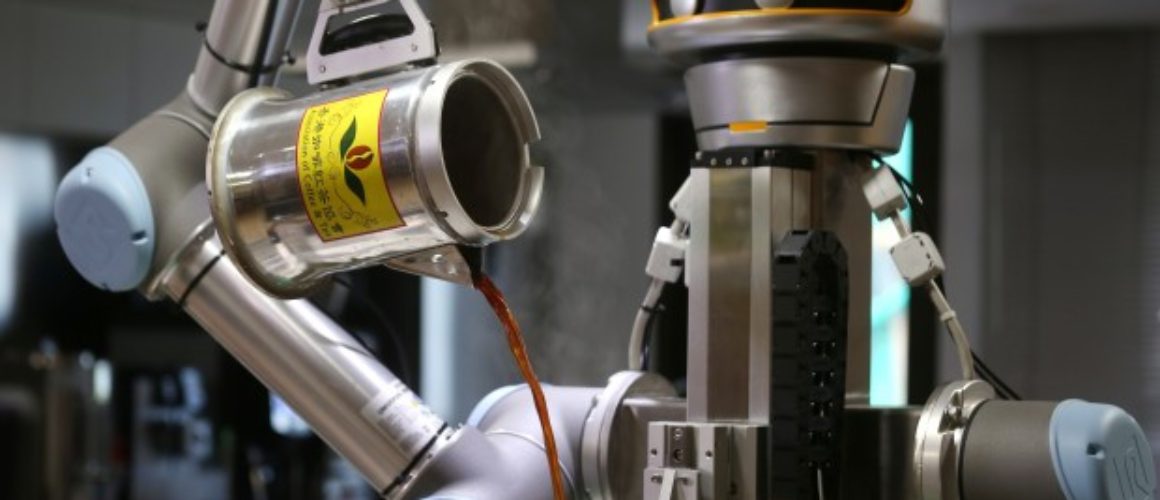Can Robots Match The Human Skill of Hong Kong Style Milk Tea Preparation ?
Hong Kong style milk tea is very popular in Hong Kong and southern parts of China. Preparation of a perfect Hong Kong milk tea cuppa needs a great deal of skill and concentration. But can a robot really match the human skill ? Many workers worry that robots and artificial intelligence will rob them of their jobs. That’s not the case in Hong Kong’s food and beverage industry, though, where KamChAI and others like it could help fill vacancies that humans show little interest in.

Built by the Association of Coffee and Tea together with the Hong Kong Productivity Council (HKPC), KamChAI – Cantonese for “golden boy” – is Hong Kong’s first AI tea maker, and has been programmed to brew a drink developed by cha chaan teng, or tea cafes. It was unveiled at the 2018 Hong Kong Food Expo this month.
Milk tea is a favourite Hong Kong drink and was included on a list of the city’s intangible cultural heritage in 2014. It originated with local adaptations of the British tea style that experimented with different blends of black tea strained through a cloth resembling a silk stocking. It also used evaporated condensed milk importing from nations like Malaysia rather than fresh milk. A cup of Hong Kong style milk tea contains about 6-10g of small leaf black tea imported from Sri Lanka (Ceylon), India (Assam) etc, 10g of sugar and about 55g of condensed milk.
“KamChAI can standardise the quality of milk tea and make it easier for the workers in restaurants,” says Karen Wong Ka-wei, vice-president of the Association of Coffee and Tea.
The association has been running the Kam Cha competition for the past 10 years to promote Hong Kong-style milk tea.

KamChAI’s makers consulted tea masters and cha chaan teng workers to gather data on the brewing motions, ingredient measurements and other information to ensure the 300kg robot can make a cuppa just as good as humans can. But Ip doubts a robot can ever be a match for a human tea maker.
“To make a good cup of milk tea, you need to put your heart into it,” he says.
Still, Ip concedes that, while the drink brewed by KamChAI isn’t on the same level as that of humans yet, the project ensures the cha chaan teng method of making a good cup of milk tea will never be lost.
The tea cafes that popularised Hong Kong-style milk tea are facing labour shortages. The low pay and long hours associated with working in the local hospitality industry are not young Hongkongers’ cup of tea these days. Making the problem worse are rising rents and Hong Kong’s low unemployment rate of 2.8 per cent.
In a 2016 letter submitted to the Legislative Council, the Hong Kong Federation of Restaurants and Related Trades estimated there were 280,000 workers in the restaurant industry, with some 30,000 vacancies that needed filling.
It will be a while before KamChAI can be put into wide usage and replace human tea masters. Halfway through the demonstration, the robot had a glitch and stopped. Ip continued brewing and finished well ahead of his robot competitor.
When technicians got KamChAI going again, it made eight cups of tea before pouring too much into the last cup, spilling tea on the worktop.
“KamChAI is a little bit messy, but it is like watching a child learn,” says Edmond Lai Shiao-bun, director of business development at the Hong Kong Productivity Council. There are plans to build an improved version of KamChAI.
Original Article + Video: https://www.scmp.com/lifestyle/food-drink/article/2162124/could-robots-save-hong-kong-milk-tea-extinction-kamchai



